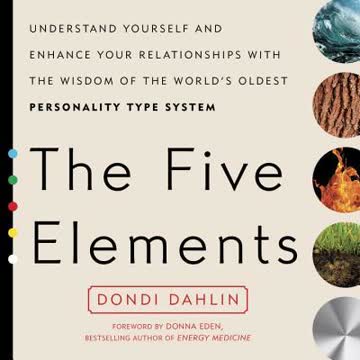Key Takeaways
1. Understanding the Five Elements: Water, Wood, Fire, Earth, and Metal
"When we recognize the slow pace of Water, the anger of Wood, the explosive energy of Fire, the codependency of Earth, or the detachment of Metal, we begin to understand that the energy of the elements ebbs and flows through each of us."
Ancient wisdom, modern application. The Five Elements system, originating from traditional Chinese medicine, provides a framework for understanding personality types and human behavior. Each element - Water, Wood, Fire, Earth, and Metal - corresponds to specific traits, strengths, and challenges.
Holistic perspective. This system offers insights into:
- Personality characteristics
- Emotional tendencies
- Physical attributes
- Relationship dynamics
- Personal growth opportunities
By recognizing our dominant element(s) and those of others, we can develop greater empathy, improve communication, and foster more harmonious relationships in both personal and professional settings.
2. Water Personality: The Creative Thinker and Philosopher
"Waters are poignant in their conversations. The philosopher type of Water doesn't want to waste time talking about silly stuff or watching things on TV that don't seem to have much meaning."
Deep thinkers and dreamers. Water personalities are characterized by their introspective nature and rich inner world. They often possess:
- Vivid imagination
- Strong intuition
- Profound creativity
- Philosophical inclinations
Challenges and growth. Waters may struggle with:
- Fear and insecurity
- Tendency to withdraw
- Difficulty with practical matters
- Procrastination
To thrive, Water types benefit from:
- Encouragement to express themselves
- Opportunities for creative pursuits
- Gentle nudges to engage with the outside world
- Support in developing self-confidence
3. Wood Personality: The Driven Achiever and Leader
"Woods are fearless. They are like the sudden expansive growth of spring after a long, slow winter."
Natural leaders and innovators. Wood personalities are characterized by their:
- Strong drive and ambition
- Clear vision and goal-orientation
- Assertiveness and confidence
- Ability to overcome obstacles
Challenges and growth. Woods may struggle with:
- Anger and frustration
- Impatience with others
- Difficulty relaxing or delegating
- Tendency to be overly critical
To thrive, Wood types benefit from:
- Learning to manage anger constructively
- Practicing patience and empathy
- Incorporating relaxation techniques
- Recognizing and appreciating others' contributions
4. Fire Personality: The Enthusiastic Socialite and Entertainer
"Fires are lit from the inside, and they are the life of the party."
Charismatic and passionate. Fire personalities are characterized by their:
- Infectious enthusiasm
- Strong social skills
- Ability to inspire others
- Love for excitement and novelty
Challenges and growth. Fires may struggle with:
- Tendency to panic or overreact
- Difficulty focusing or following through
- Impulsiveness
- Emotional volatility
To thrive, Fire types benefit from:
- Developing grounding techniques
- Learning to prioritize and focus
- Practicing mindfulness
- Balancing social activities with quiet reflection
5. Earth Personality: The Nurturing Caregiver and Peacemaker
"Earths hold the space of calm during transitions."
Compassionate and supportive. Earth personalities are characterized by their:
- Strong empathy and caring nature
- Desire for harmony and peace
- Ability to nurture and support others
- Practical and reliable approach to life
Challenges and growth. Earths may struggle with:
- Tendency to worry excessively
- Difficulty setting boundaries
- Neglecting self-care
- Resistance to change
To thrive, Earth types benefit from:
- Learning to set healthy boundaries
- Developing self-care practices
- Embracing change as an opportunity for growth
- Balancing care for others with care for self
6. Metal Personality: The Refined Perfectionist and Spiritual Seeker
"Metals are like the Eiffel Tower in Paris, standing almost one thousand feet high and dwarfing the structures and landscape around it."
Visionaries and perfectionists. Metal personalities are characterized by their:
- Strong sense of ethics and integrity
- Attention to detail and quality
- Spiritual or philosophical inclinations
- Ability to see the big picture
Challenges and growth. Metals may struggle with:
- Tendency to detach emotionally
- Difficulty expressing emotions
- Rigidity in thinking or behavior
- Perfectionism leading to procrastination
To thrive, Metal types benefit from:
- Practicing emotional expression and vulnerability
- Learning to embrace imperfection
- Developing flexibility in thinking and behavior
- Balancing spiritual pursuits with practical engagement
7. Balancing Your Element for Personal Growth and Relationships
"Accepting, understanding, and working with the elements that compose your personality are crucial to understanding the actions and motivations of others and being at peace with yourself."
Self-awareness and growth. Understanding your dominant element(s) provides a foundation for personal development:
- Recognize your strengths and challenges
- Develop strategies to balance your element
- Cultivate traits from other elements to become more well-rounded
Improved relationships. The Five Elements system offers insights for better interpersonal dynamics:
- Understand others' motivations and behaviors
- Communicate more effectively with different personality types
- Navigate conflicts with greater empathy and wisdom
By embracing the wisdom of the Five Elements, individuals can foster personal growth, enhance relationships, and create more harmony in their lives and communities.
8. Applying the Five Elements to Understand and Guide Children
"Once you tune in to children's elements, you can begin to predict their behaviors and create new techniques to help balance stressful moments."
Tailored parenting approach. Understanding a child's dominant element(s) allows for more effective nurturing:
- Recognize innate strengths and challenges
- Adapt communication and discipline styles
- Support individual growth and development
Element-specific strategies:
- Water children: Encourage creativity, provide emotional safety
- Wood children: Offer clear boundaries, channel energy positively
- Fire children: Balance excitement with grounding activities
- Earth children: Foster independence, encourage self-care
- Metal children: Promote flexibility, encourage emotional expression
By applying the Five Elements wisdom to child-rearing, parents and educators can create more supportive, understanding environments that allow children to thrive and develop their unique potential.
Last updated:
FAQ
1. What is The Five Elements: Understand Yourself and Enhance Your Relationships with the Wisdom of the World's Oldest Personality Type System by Dondi Dahlin about?
- Ancient personality system: The book introduces the Chinese Five Elements personality system—Water, Wood, Fire, Earth, and Metal—explaining how these elemental energies shape personality, emotions, and behaviors.
- Modern application: Dondi Dahlin translates this ancient wisdom into practical advice for self-understanding, relationship improvement, and personal growth, blending Eastern and Western perspectives.
- Comprehensive guide: The book covers each element’s traits, stress responses, health tips, and offers exercises and assessments to help readers identify and work with their elemental makeup.
2. Why should I read The Five Elements by Dondi Dahlin?
- Deep self-understanding: The book provides a unique lens to explore your motivations, emotional patterns, and behaviors, fostering self-acceptance and growth.
- Improved relationships: Understanding the Five Elements helps you navigate conflicts, communicate more effectively, and cultivate empathy with others.
- Holistic health insights: Dahlin connects personality with physical health and lifestyle, offering tailored advice on diet, movement, and energy medicine for each element.
3. What are the key takeaways from The Five Elements by Dondi Dahlin?
- Elemental self-awareness: Recognizing your primary and secondary elements clarifies your strengths, challenges, and stress responses.
- Relationship harmony: The Five Elements system explains why people behave differently and how to support and communicate with each type.
- Practical tools: The book provides exercises, movement suggestions, and energy medicine techniques to balance your elemental energies and improve well-being.
- Holistic integration: It links emotional, physical, and spiritual health, encouraging a balanced, compassionate approach to life and relationships.
4. What are the Five Elements personality types in Dondi Dahlin’s system and their core characteristics?
- Water: Introspective, creative, and philosophical, Waters value depth, solitude, and meaning, but may struggle with fear and isolation.
- Wood: Driven, decisive, and justice-oriented, Woods are natural leaders who thrive on action and fairness, but can be rigid or irritable.
- Fire: Energetic, joyful, and charismatic, Fires love social connection and spontaneity, but may become scattered or panicked under stress.
- Earth: Nurturing, dependable, and compassionate, Earths prioritize harmony and caregiving, but can worry excessively and become codependent.
- Metal: Orderly, refined, and spiritual, Metals seek purity and high standards, often appearing detached and struggling with grief or letting go.
5. How does Dondi Dahlin’s Five Elements system connect personality types to health and emotions?
- Elemental emotions: Each element is associated with a primary emotion—fear (Water), anger (Wood), joy/panic (Fire), worry (Earth), and grief (Metal).
- Physical health links: The system connects elements to specific organs and health tendencies, such as Water with kidneys/bladder and Metal with lungs/skin.
- Holistic well-being: Dahlin offers tailored advice on diet, movement, and energy practices to support both emotional and physical health for each element.
6. How can I identify my primary and secondary elements using Dondi Dahlin’s method?
- Self-assessment tools: The book provides quizzes and reflective exercises to help you determine your dominant and secondary elements.
- Observation of traits: By examining your core motivations, stress responses, and relationship patterns, you can recognize your elemental makeup.
- Physical and emotional clues: Dahlin describes physical characteristics, emotional tendencies, and lifestyle preferences unique to each element for self-identification.
7. What practical advice does Dondi Dahlin give for balancing each of the Five Elements personality types?
- Water: Engage in gentle movement, stay hydrated, seek social support, and use creative outlets to avoid isolation and fear.
- Wood: Practice martial arts or stretching, rest your eyes, use breathing exercises to calm anger, and detoxify the liver.
- Fire: Incorporate calming activities like swimming or yoga, manage stress with specific energy exercises, and maintain heart health.
- Earth: Prioritize self-care, set boundaries, manage worry with grounding activities, and avoid codependency.
- Metal: Practice letting go, use deep breathing and yoga, and balance detachment with meaningful connection to others.
8. How does understanding the Five Elements improve relationships, according to Dondi Dahlin?
- Recognize stress responses: Knowing how each element reacts under stress helps prevent misunderstandings and reduces conflict.
- Tailor communication: Approaching others with awareness of their elemental needs fosters empathy and connection.
- Enhance compassion: The system encourages seeing beyond surface behaviors to the underlying elemental energies, promoting patience and harmony.
9. What are the flow and control cycles in the Five Elements system, and how do they affect compatibility and relationships?
- Flow cycles: Elements that support each other in the natural flow (e.g., Water supports Wood, Wood supports Fire) tend to have harmonious, balanced relationships.
- Control cycles: Elements in control relationships (e.g., Water controls Fire, Fire controls Metal) may experience tension and push each other’s buttons, leading to conflict.
- Awareness and harmony: Understanding these cycles helps manage challenges, promote balance, and foster mutual respect in relationships.
10. How are the Earth and Metal elements described in detail in The Five Elements by Dondi Dahlin?
- Earth: Nurturing, empathetic, and community-oriented, Earths express love through caregiving but may struggle with worry, codependency, and setting boundaries.
- Metal: Orderly, stoic, and focused on refinement, Metals value structure, high standards, and spiritual growth, but can become detached and struggle with grief.
- Emotional and health patterns: Earths are prone to digestive issues and emotional exhaustion, while Metals may experience respiratory problems and isolation.
11. How does Dondi Dahlin address children’s personalities and development using the Five Elements system?
- Elemental traits in children: The book explains how each element manifests in children’s behaviors, fears, and needs, such as Water’s imagination or Wood’s assertiveness.
- Parenting strategies: Dahlin offers tailored advice for motivating, setting boundaries, and supporting emotional expression in children of each element.
- Energy exercises: Specific movement and energy medicine practices are provided to help children balance their elemental energies and promote well-being.
12. What are some of the best quotes from The Five Elements by Dondi Dahlin and what do they mean?
- Water (Abraham Lincoln): “I walk slowly but I never walk backward.” Reflects Water’s thoughtful, steady progress and resilience.
- Wood (Harry S. Truman): “I never gave anybody hell. I just told the truth and they thought it was hell.” Captures Wood’s blunt honesty and directness.
- Fire (Marie Osmond): “If you’re going to be able to look back on something and laugh about it, you might as well laugh about it now.” Emphasizes Fire’s joyful, present-moment attitude.
- Earth (Rumi): “When we practice loving kindness and compassion, we are the first ones to profit.” Highlights Earth’s nurturing and compassionate essence.
- Book praise: “The Five Elements will grow your compassion and appreciation of people. It’s simple, yet so profound.” Summarizes the book’s core benefit of fostering deeper understanding and harmony.
Review Summary
The Five Elements receives mostly positive reviews, with readers praising its insights into personality types and self-understanding. Many find it helpful for understanding themselves and others better. Some criticize the author's name-dropping and personal anecdotes as distracting. Readers appreciate the book's accessible writing style and practical applications. However, a few reviewers find it basic or lacking depth. Overall, the book is seen as a valuable introduction to the Five Elements system, with potential for personal growth and improved relationships.
Similar Books
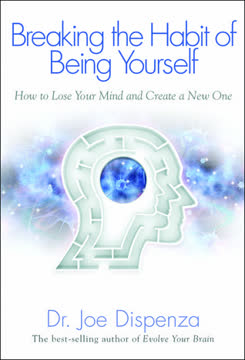
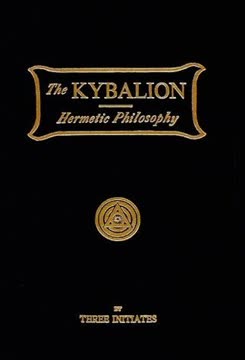

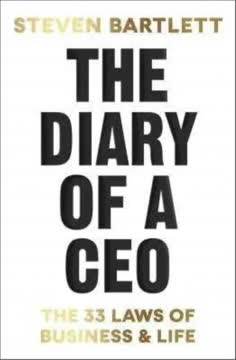

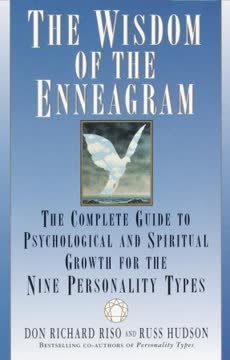
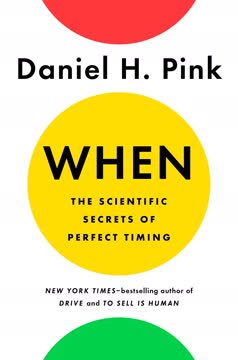
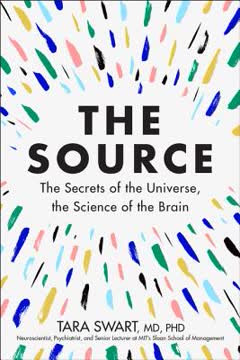
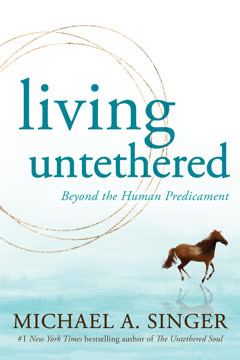

Download PDF
Download EPUB
.epub digital book format is ideal for reading ebooks on phones, tablets, and e-readers.
